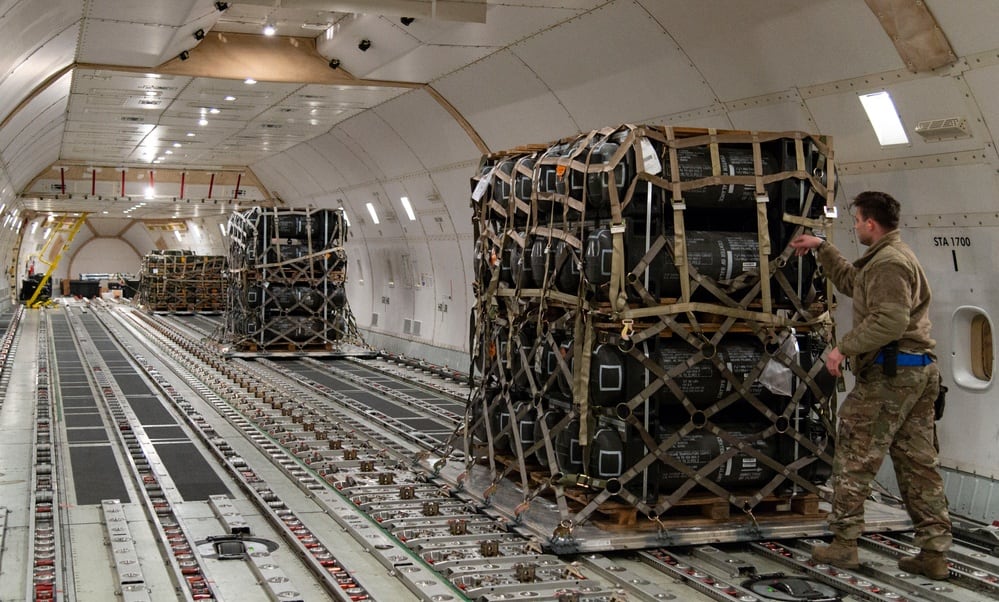Soldiers and airmen from nearly a dozen bases across the Army and Air Force have been put on heightened alert in case the U.S. sends troops across the Atlantic to respond to a Russian incursion into Ukraine.
The Pentagon announced Monday that up to 8,500 troops have been told to get themselves ready to deploy with at least five days’ notice, either alongside the NATO Response Force or as part of unilateral deployments.
“These units, all told include medical support, aviation support, logistics support, and of course, combat formations,” Pentagon spokesman John Kirby said Thursday. “I want to just underscore one other note and that is, as I said many times earlier this week, these forces are on a heightened preparedness to deploy. They have not been activated.”
Units on heightened preparedness to deploy include the 82nd Airborne Division and XVIII Airborne Corps at Fort Bragg, North Carolina; the 101st Airborne Division at Fort Campbell, Kentucky; and the 4th Infantry Division at Fort Carson, Colorado.
Troops at Fort Polk, Louisiana; Fort Stewart, Georgia; Fort Hood, Texas; Joint Base Lewis-McChord, Washington; Davis-Monthan Air Force Base, Arizona; Wright-Patterson Air Force Base, Ohio; and Robins Air Force Base, Georgia, are also on heightened preparedness to deploy.
The 82nd Airborne Division, specifically, maintains an Immediate Response Force that is always on quick recall. Soldiers from the IRF deployed to Kabul in August, for example, to secure Hamid Karzai International Airport during the U.S. withdrawal from Afghanistan.
Some of the units and installations involved have a history of rotational deployments to Europe, which were launched in 2015 to reassure allies there after Russia annexed Crimea. Those rotations have involved armored, aviation and sustainment units.
For example, in 2017, the 4th Infantry Division’s 3rd Armored Brigade Combat Team sent 3,500 troops, 87 tanks and 144 Bradley fighting vehicles, making it the biggest shipment of American armor to Europe since the fall of the Soviet Union. The unit arrived in Poland before fanning out to Estonia, Latvia, Romania, Bulgaria and other countries.
Kirby declined to more specifically identify the units, or the equipment that they might be deploying with.
He said Tuesday that five days is the shortest recall period for any of the units, but that some might have a longer lead time.
“I’m not going to rule out the possibility that there will be more such direction given to additional units at home, or even abroad, in terms of their readiness posture,” Kirby said Tuesday, which could include units based in Europe.
Meghann Myers is the Pentagon bureau chief at Military Times. She covers operations, policy, personnel, leadership and other issues affecting service members.
Joe Gould was the senior Pentagon reporter for Defense News, covering the intersection of national security policy, politics and the defense industry. He had previously served as Congress reporter.





